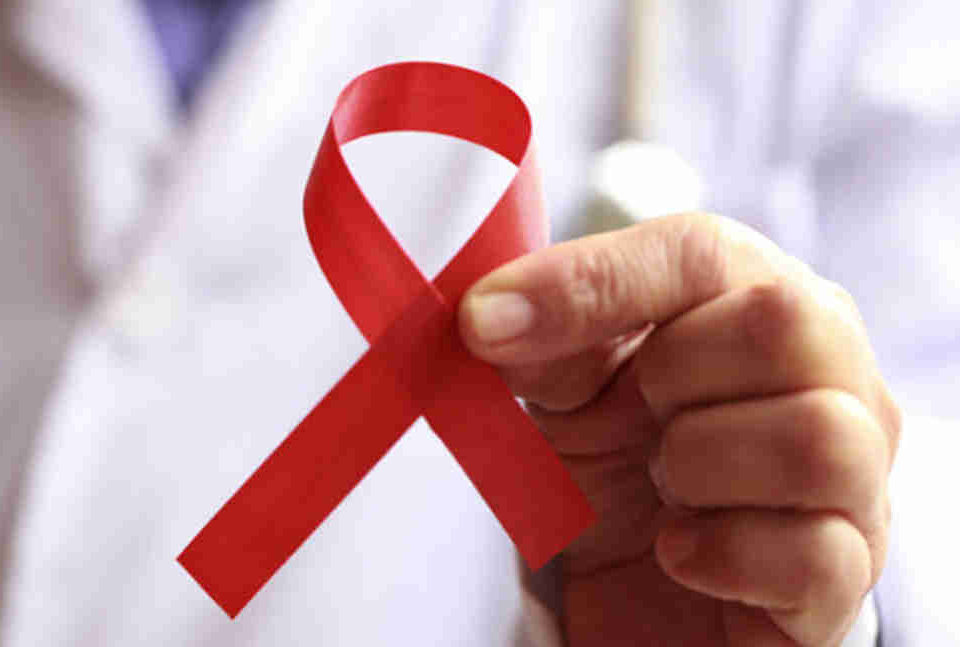- 如有疑问,请联系电邮
- customer@ihealth66.com
USNEWS:15种不能对慢性疼痛患者说的话

纽约长老会医院-哥伦比亚和康奈尔(New York-Presbyterian Hospital-Columbia and Cornell)
2019年1月17日
USNEWS:现在的智能手机已经可以诊断多种健康问题!
2019年1月21日By Lisa Esposito
疼痛是很多疾病的症状表现形式,某些疾病很可能会出现长期疼痛症状。所以,对待有疼痛症状的患者要非常注意自己的言行。因为,毫无根据的评论和轻率的假设可能会造成额外伤害。下面就是总结出来的一些话,请不要随意对疼痛者说。
- 你需要放松。
- 我们在限制止痛药。
- 对不起,你的疼痛没有按计划进行。
- 你看起来不疼。
- 哦,你这可怜的家伙。
- 我需要你医生的一张便条。
- 把它吸起来。
- 如果我能帮助你,请告诉我。
- 情况可能总是更糟。
- 我从没见过你做这种常规手术的结果。
- 我听说有一种新的神经阻滞能治好你。
- 如果你去度假,疼痛不会那么严重。
- 你试过这个吗?
- 用1到10的量表给你的疼痛评分。
- 告诉我你引述的痛苦。
Rubbing alcohol in the wound
People with chronic pain have heard it all – over and over. Acquaintances say, “You look fine to me,” or ask, “Why aren’t you better yet?” Doctors and nurses advise, “There comes a point when you must accept a new normal.” For someone coping with continual pain, possibly for years, none of this is necessarily original or helpful. You may know someone with chronic pain and just not be sure what to say. Read on as people living with pain share their biggest pet peeve remarks from family, friends and health care providers – and suggest more thoughtful, supportive comments.
You need to take it easy.
Sakiyyah Burwell-Darden has a form of sickle cell disease. Sickle cell disorders cause severe pain episodes and sometimes lasting damage as blood cells morph to rigid, sickle shapes, blocking circulation in the blood vessels, organs and joints. “People just want you not to be in pain,” says Burwell-Darden, a community health worker and hemoglobinopathies educator with the Sickle Cell Association of New Jersey. “But at the end of the day, you want to be in control and feel like you have some sort of power. You already feel powerless because of the disease, and you have other people telling you, ‘Oh, no, don’t do this; don’t do that,’ instead of letting us decide our limitations on our own.” Suggestions from peers are different. “We come together at workshops and I hear other people figure out ways to distract themselves from pain,” she says. “That helps.” Photography works for her: “I’ll just sit on my porch, put up the tripod and start clicking away.”
We’re cutting back your pain medicine.
Doctors are coming under more scrutiny when it comes to prescribing opioid pain medications. New restrictions may not account for the situations of individuals managing chronic pain. “What bothers me when I go to the doctor sometimes is that now they’re trying to limit the amount of pain medicine they give us,” Burwell-Darden says. “I just tell them, ‘I kind of need the amount that I was given before, just to make it through the day.'” Providers may try switching to different drugs or dosages that might or might not tide her over. “When you know what works for you, you want what works for you,” she says.
Sorry, your pain isn’t staying on schedule.
Sickle cell crises can lead to hospitalizations. “When I’m in the hospital, sometimes the nurses are stuck on giving your pain medicines at a certain time,” Burwell-Darden says. “But my pain doesn’t listen to a schedule.” In addition to providing adequate medication, she says, hospitals can help patients by offering complementary methods like Reiki (a hands-on healing method using the therapist’s touch) or having a chaplain come in to pray. At home, she says, “I’m always chasing to keep the pain level down. Because I have to make sure I don’t run out of pain medicine.” By listening to patients’ hidden concerns, providers can better help them. “Let me tell you: Maybe I can’t afford that medication, or getting back here two times a week is difficult because I don’t have enough gas money,” she says. “Or that I only work part time because of my illness. So if they can make you a partner in your health care, it will go a long way to make you feel like you have some sort of power.”
You don’t look like you’re in pain.
“Sometimes, because a person with sickle cell has lived with pain all of their life, or they deal with pain constantly, their pain tolerance (adapts),” Burwell-Darden says. “You might not let on just how bad the pain is because you have to live every day like this, so you might still walk around with a smiling face. Meanwhile, you’re in excruciating pain. Or, you might not be sitting there balled up, crying, because this is just something you learn to accept and deal with.” Others can wrongly assume that someone calmly listening to music, for instance, must be feeling OK: “They often mistake people’s outer appearance with what’s going on with them inside.”
Oh, you poor thing.
Pity doesn’t help kids manage their pain, says Chris Nieto, the father of a 14-year-old girl with juvenile rheumatoid arthritis. “(People) who learn of our daughter’s disease and that she’s got chronic pain may pity her or feel sorry for her and want to treat her differently, thinking that they’re helping her out,” says Nieto, a senior vice president at the National Hispanic Institute. “We believe that limits her and we often tell people: ‘Treat her like you would every other kid or student. She recognizes when she is in pain and she has to be her biggest self-advocate out there, and raise awareness.'” Parents play an important role, he adds. “It’s giving our daughter the confidence to stand on that belief, that if she is really in pain and can’t do something, she needs to stand up for herself and we’ll support her in the process.”
We’ll need a note from your doctor.
School personnel may doubt that a student has pain and demand medical documentation. (This can happen in the workplace, too.) “Especially in school, young kids might have the reputation that they’re faking it – they don’t want to participate in physical activities,” Nieto says. He recounts an incident where a new athletic staff member, unaware of his daughter’s situation, made her run with her classmates while she was hurting. Fortunately, other staff members have been caring and helpful. “The people in the front office of her school are just so aware and understanding,” he says. “When our daughter comes and expresses that she’s in pain, they’re very responsive. They say, ‘I’m sorry that you’re going through that’ and they allow her to lie down, or get ice or make a phone call if she needs it. They tell her, ‘I’m always here if you need anything.'”
Suck it up.
Some people show all the sensitivity of a drill sergeant when dealing with kids trying to manage their pain. With his daughter, Nieto says, “If they’re not aware, they’ll tell her: ‘Suck it up,’ or ‘Come on, keep working’ or ‘Work harder and faster.'” That’s counterproductive, however. “Maybe with kids without a chronic-pain type of condition, that might work as a motivator,” he says. “But she does realize that she has some physical limitations and no matter how much harder she tries, she’s limited. And that makes her feel bad.” On the other hand, health professionals who use the right approach – one of respect and encouragement – can truly motivate young patients. “I’m impressed by how you handle this condition,” is a confidence-builder, one that recognizes a kid’s ability.
Let me know if I can help you.
Stacey has been dealing with complex regional pain syndrome for more than eight years. It started with complications after surgery, which was then followed by a car crash that worsened her pain. Vague promises of future assistance don’t cut it for her. “If people really wanted to help and sincerely stood by their offer, they would propose offering to take over a specific task or chore, bring over a meal (or) run an errand,” says Stacey, a Long Island resident who asked that her last name not be used as she’s a patient still actively seeking medical care.
Things could be worse: You could have cancer.
“Stay strong” is another rah-rah phrase that Stacey could do without. Here’s what she’d love to hear instead: “It sounds like you’ve really had a bad week and I wish you didn’t have to suffer this way. Can I come over and keep you company?” Also welcome: “Just being a good friend: frequent calls – kind support, a funny card, a warm hug – is often all that it takes. A sense of humor goes a long way.”
I have never seen your outcome from such a routine surgery.
With complex regional pain syndrome, instead of recovering fully after an injury or surgery, patients continue to suffer recurring bouts of intense pain. Stacey and patients like her often face skepticism, if not outright disbelief, from health care providers. Once they receive a CRPS diagnosis, the medical feedback doesn’t necessarily get better: “These things take a very long time to heal. Nerves regenerate at 1 millimeter per day – be patient.” For Stacey, a more positive, proactive response would be: “We are a team and I am on your side to help improve your quality of life. No one should have to live with this amount of daily torture.”
I heard there’s a novel nerve block that can fix you.
After sustaining life-altering complications from surgery, CRPS patients are understandably cautious when offered new, cutting-edge drugs or procedures. Conversations starting like this make Stacey feel wary: “If you would only try this (prescription with severe side effects and medical risks/this invasive neurostimulator implant that requires surgery), it would make you feel better.” A comprehensive team approach would be more reassuring: “May I contact some of your other medical providers so we can work together to better help you manage your pain?”
If you went away on vacation, I guess the pain can’t be all that bad.
The world doesn’t stop turning for people with chronic pain. They continue to raise families, hold down jobs, socialize, stay physically active and strive to enjoy the best quality of life they can. Traveling and recreation take extra planning and effort. Doctors and others should understand people are managing their lives despite pain, not in its absence. For Stacey, supportive health care providers would say something like this: “What activities do you miss the most? Let’s set some goals and find a way to work toward getting you back in the game without spiking your pain.”
Have you tried this?
If you’re eager to suggest pain-relief methods to those around you, think twice. “We all love giving advice, and it’s really easy to just say, ‘Have you tried this?'” says Seth Ginsberg, co-founder and president of CreakyJoints, a nonprofit focused on arthritis and rheumatic disease, part of the Global Healthy Living Foundation. “But if loved ones or family have been living with chronic pain, it’s safe to assume they’ve tried multiple management and treatment strategies to deal with it.” Empathy, on the other hand, is a winner, from health professionals and friends alike. “It’s an amazing thing if we can create that force field of understanding, caring and interest in the person’s experience,” Ginsberg says. “For patients, the people with pain, it would certainly accelerate their feeling better.”
Rate your pain on a scale from 1 to 10.
Asking patients to boil their pain down to a single number is a standard assessment method for health care providers. “Emergency rooms are going to go right to things like pain scales: zero to 10,” Ginsberg says. “It’s the analog we have. But when you’re in a more proactive management standpoint – talking with a specialist or just a doctor, specifically – then it’s: This is what this pain is coming in the way of. This is why this pain has to go away, so that I can resume X, Y, Z. This is the impact.” For a more nuanced pain-tracking method, CreakyJoints offers a free app called ArthritisPower that lets chronic pain patients track and log their symptoms and treatments to share with doctors over time.
Tell me about your quote-unquote pain.
When health professionals put air quotes around pain, it sets a skeptical tone. “Next time you talk to a pain specialist, ask them the difference between a patient with pain and air-quoted pain,” Ginsberg says. “And then they’ll talk about the people who come in to get the pills.” It’s important to take pain individually and seriously, he says: “There is a substantial population where pain necessitates opioids. It’s pain dialed up when it affects your function; not just what you want to do but what you need to do. People are in dire need of help.” It comes back to a lack of empathy, he concludes: “That’s something that we’re working on and trying to help change hearts and minds about.”
What not to say to people with chronic pain
- You need to take it easy.
- We’re limiting pain medicine.
- Sorry, your pain isn’t sticking to schedule.
- You don’t look like you’re in pain.
- Oh, you poor thing.
- I need a note from your doctor.
- Suck it up.
- Let me know if I can help you.
- Things could always be worse.
- I’ve never seen your outcome from such a routine surgery.
- I heard there’s a novel nerve block that can fix you.
- If you went away on vacation, the pain can’t be all that bad.
- Have you tried this?
- Rate your pain on a scale from 1 to 10.
- Tell me about your quote-unquote pain.





